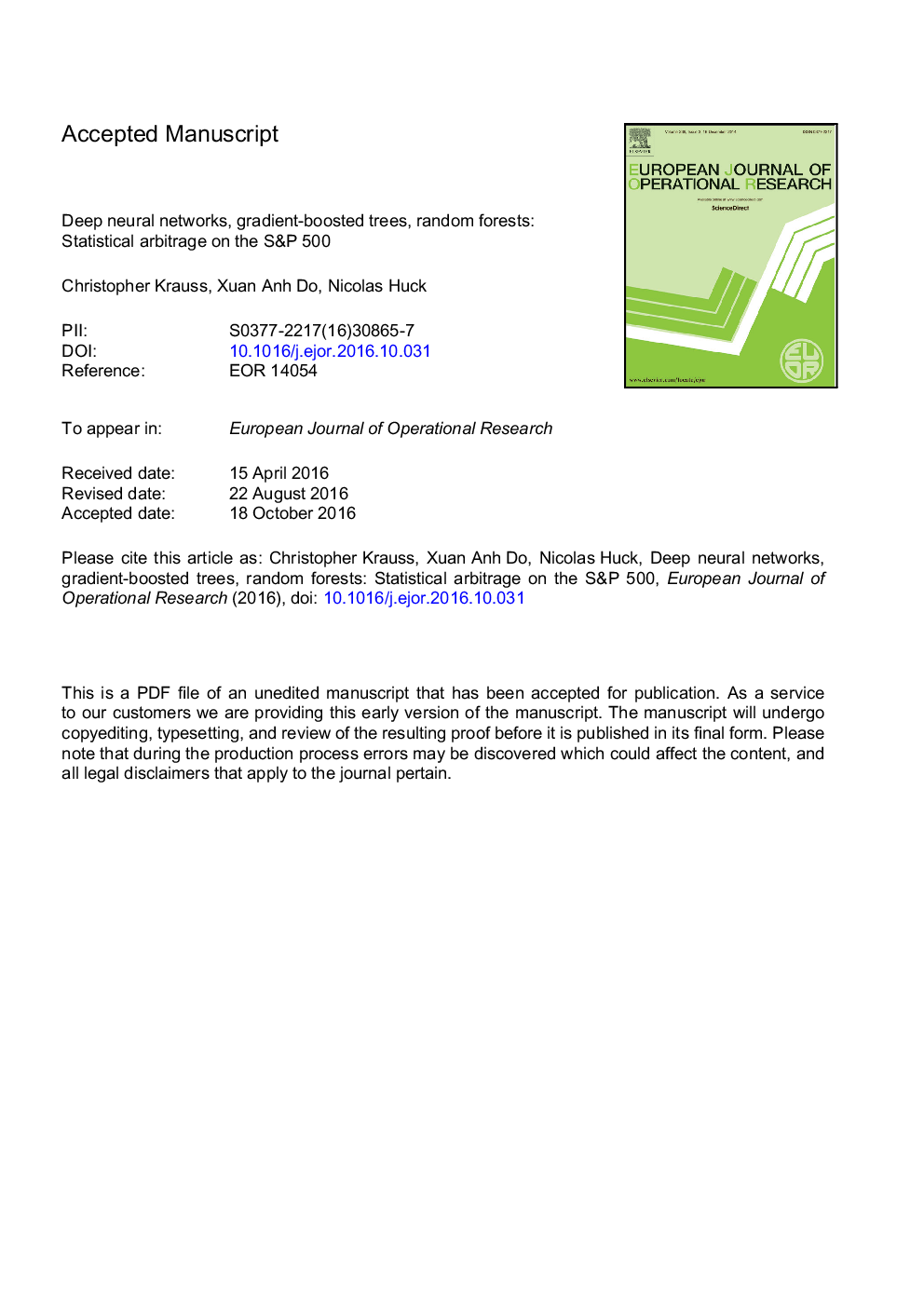| Article ID | Journal | Published Year | Pages | File Type |
|---|---|---|---|---|
| 4960200 | European Journal of Operational Research | 2017 | 33 Pages |
Abstract
In recent years, machine learning research has gained momentum: new developments in the field of deep learning allow for multiple levels of abstraction and are starting to supersede well-known and powerful tree-based techniques mainly operating on the original feature space. All these methods can be applied to various fields, including finance. This paper implements and analyzes the effectiveness of deep neural networks (DNN), gradient-boosted-trees (GBT), random forests (RAF), and several ensembles of these methods in the context of statistical arbitrage. Each model is trained on lagged returns of all stocks in the S&P 500, after elimination of survivor bias. From 1992 to 2015, daily one-day-ahead trading signals are generated based on the probability forecast of a stock to outperform the general market. The highest k probabilities are converted into long and the lowest k probabilities into short positions, thus censoring the less certain middle part of the ranking. Empirical findings are promising. A simple, equal-weighted ensemble (ENS1) consisting of one deep neural network, one gradient-boosted tree, and one random forest produces out-of-sample returns exceeding 0.45 percent per day for k=10, prior to transaction costs. Irrespective of the fact that profits are declining in recent years, our findings pose a severe challenge to the semi-strong form of market efficiency.
Related Topics
Physical Sciences and Engineering
Computer Science
Computer Science (General)
Authors
Christopher Krauss, Xuan Anh Do, Nicolas Huck,
